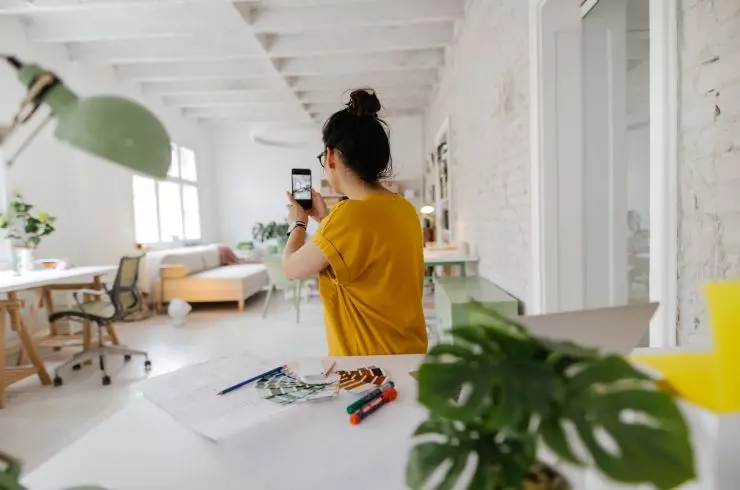 Image: Green vs Sustainable Design
Image: Green vs Sustainable Design
Have you ever thought about the impact of interior design on the environment? Sustainable interior design is a concept that can revolutionize our living spaces while preserving the Earth for future generations. It goes beyond aesthetics and focuses on creating environmentally responsible and aesthetically pleasing spaces. In this article, we will explore the importance of sustainability in interior design and how you can implement it in your own space.
Sustainability in Interior Design: Why It Is Important?
Imagine a living space where you can unwind and enjoy the fruits of your labor. Sustainability in interior design can help create such a haven while taking care of our planet. By embracing green living and incorporating homemade recycled goods, interior designers can contribute to a better future.
What Is Sustainability in Interior Design?
Sustainability in design means integrating objects and materials that adhere to principles of economic and ecological sustainability. It involves creating spaces that minimize negative environmental impact throughout their entire lifecycle. For example, interior designers can choose renewable, recyclable, and biodegradable materials like bamboo instead of hardwood for flooring.
Why Is Sustainable Interior Design Important?
Adopting sustainable interior design practices is not just ethically responsible; it also saves time, effort, and cost. By addressing environmental issues, sustainable design ensures customer satisfaction while promoting a healthier and more efficient approach to interior design.
How to Implement Sustainability in Interior Design
The purpose of eco designs is to foster collective awareness of the need for sustainability in interior design. One way to achieve this is by repurposing materials and furniture that would otherwise go to waste. Additionally, using energy-efficient equipment, maximizing natural light, and working with recyclable materials can significantly reduce our carbon footprints.
Choosing Sustainable Materials in Interior Design
When it comes to sustainable interior design, conscious material choices can make a significant difference. Here are some materials to consider:
Bamboo
Bamboo is a fashionable choice for sustainable design. It is durable, adaptable to heat, and can be used to make countertops, window screens, and stylish furniture.
Restored Woods
By reclaiming wood, we can save forests and reduce waste. Incorporating antique wood into your design can give your home a unique vintage charm.
Natural Stones
Incorporating natural stones like granite, slate, and sandstones not only adds a rustic touch but also reduces the environmental impact of your design.
Recycled Aluminum
Using recycled aluminum is not only environmentally friendly but also contributes to a healthier indoor environment. It can be used to create bold lighting fixtures, staircases, and railings.
Improving Energy Efficiency
Maximizing energy efficiency in interior design can significantly reduce utility bills. Here are some ways to achieve this:
- Replace current lights with energy-efficient ones, like LED or CFL bulbs.
- Consider building orientation and utilize solar design techniques.
- Use heavy libraries as thermal barriers against walls.
- Check for air leaks around windows, doors, and electrical outlets and seal them.
- Add insulation to reduce heat loss in winter and heat gain in summer.
Improving Indoor Air Quality and Health
Sustainable design prioritizes using non-toxic, low VOC materials, which can significantly reduce harmful chemicals released into the air. Incorporating natural materials like wood and stone can further contribute to healthy indoor air quality.
Proper Ventilation
Strategic placement of operable windows and doors, along with cross-ventilation, improves air quality and human health. It also allows natural light to enter the room, regulating the body's biological clock and creating a warmer, tranquil setting.
Benefits of Natural Light
Natural sunlight not only regulates our circadian rhythm but also helps improve mood, attention span, and sleep. Consider incorporating natural light into your design by using light boxes or arranging furniture to maximize exposure.
Importance of Non-toxic Materials
Using non-toxic materials promotes a healthy and sustainable environment. Toxic materials can cause various health issues and harm the environment. By choosing non-toxic alternatives, we can create safer living spaces.
The Difference Between Green Design and Sustainable Design
While the terms "green design" and "sustainable design" are often used interchangeably, there are slight differences. Green design focuses on reducing the impact of electricity, home appliances, and cement buildings, while sustainable design is more concerned with the building itself and its longevity. Both concepts play a crucial role in achieving environmentally friendly interior design.
Conclusion
By incorporating sustainability into interior design, we can create living spaces that are not only visually appealing but also environmentally responsible. Making conscious choices, using sustainable materials, improving energy efficiency, and prioritizing health and indoor air quality can make a significant impact. Let's embrace sustainability and create a better tomorrow for ourselves and future generations.
 Image: A woman taking photos of a living room under natural light
Image: A woman taking photos of a living room under natural light

















![7 Best Sites for Advertising Rental Property Listings [Free + Paid]](https://saigonintela.vn/uploads/images/blog/admin/2024/02/15/7-best-sites-for-advertising-rental-property-listings-free-paid-thumb-1707966641.webp)